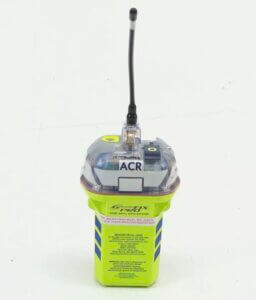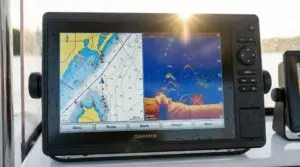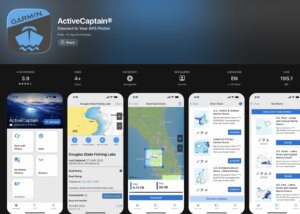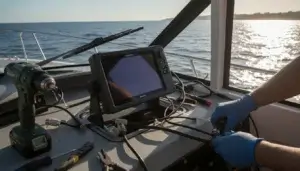Life rafts are one of the last lines of defense when faced with a serious emergency at sea. For anyone who spends time on open water, whether as crew, passengers, or rescue personnel, the smooth deployment of a life raft in heavy weather is essential.
Over the years, I’ve learned that even with the best equipment, real-world survival situations can turn out much differently than a drill or manufacturer demonstration. Here, I’ll share what I’ve picked up from true-life deployment failures, plus a collection of heavy weather survival tips and essential life raft maintenance advice to help others avoid the same mistakes.
Understanding Life Raft Deployment Failures in Heavy Weather
When the weather turns really harsh, deploying a life raft becomes a high-stress task with little room for error. I’ve followed accident reports and spoken with survivors who have faced stormy seas, and the common life raft issues that pop up—the lessons learned from these failures—are not always what you’d expect from a manual or survival course. Many deployment failures occur due to a mix of equipment faults, misunderstandings about how the equipment works, boat movement, and panic under pressure. Heavy weather simply makes each of these challenges much worse.
Some of the problems I’ve seen or researched include:
- Rafts failing to inflate fully or at all.
- Canisters that can’t be released from mounts or stowage.
- Punctures during inflation caused by sharp objects on deck.
- Failure to secure the painter line, causing rafts to float away.
- Rafts flipping upside down or being swept away in strong wind.
Because these issues often come as a series of mishaps rather than a single error, life raft deployment failures lessons learned from past rescues reveal that preparation, routine practice, and equipment checks save lives.
The Causes Behind Common Life Raft Issues
Having participated in safety briefings and real abandon-ship drills, I can say that the reasons behind common life raft issues are usually a mix of human error and mechanical shortcomings. Here’s how it breaks down:
- Poor Storage and Mounting: Rafts stored in hard to reach spots or not secured properly can be impossible to release quickly when a vessel is listing or rolling.
- Aged, Damaged, or Under Maintained Rafts: I’ve seen cracked canisters, faded rubber seams, and tangled lines, all of which increase the risk that the raft won’t deploy correctly.
- Panic, Inexperience, and Confusion: Especially in rough conditions, simple steps like tying off the painter (the inflation line) can be skipped, which means the raft might drift away before anyone gets on.
- Overreliance on Automatic Systems: Many believe hydrostatic releases or automatic inflation will work no matter what, but heavy weather can jam these systems, or the raft may not be accessible from the waterline.
- Obstructions and Deck Debris: Loose rigging, sail ties, fishing gear, or even nonskid tape can puncture or hold up the raft during launch, especially as the boat bounces in big waves.
A lot of survivors I’ve talked with mention that practical, repeated hands-on practice, not just theoretical knowledge, marked the difference between life raft deployment failures and successful launches.
The Reality of Heavy Weather Survival
If I picture myself needing to abandon ship in a storm, some heavy weather survival tips always stand out. In rough seas and high winds, everything gets more complicated, colder, and riskier. Equipment that worked perfectly in flat calm or in a classroom often proves much trickier when the boat is pitching violently and people are already cold and wet. I’ve learned the following tips really matter:
- Ship’s Motion: Deploying the raft from the lowest, most sheltered point possible reduces the risk of the raft being punctured or blown away the moment it inflates. On some boats, that means cutting lines to allow the raft to float free in the water, not from high up on a deck.
- Use of Safety Lines: Everyone should use safety lines or lifejackets with tethers when moving about in a storm. More than one rescue report highlights the danger of crew slipping and being washed overboard while trying to release or board the raft.
- Boarding Techniques: Entering from the water is almost always easier than climbing in from the deck. Inflatable rafts can be tricky to board, especially with waterlogged foul-weather gear.
- Keeping the Group Together: Crew members who delay or lose grip on the raft often become separated for good, especially in breaking seas after dark.
Getting familiar with life raft boarding ladders, righting lines for upside-down rafts, and what contents are included in your raft’s survival pack ahead of time can make a huge difference if a deployment is necessary.
Lessons Learned from Deployment Failures
Reviewing accident investigations, listening carefully to survivors’ stories, and running drills myself have all revealed useful lessons. Here are some practical takeaways:
- Practice Matters Most: Regular hands-on training (both on calm days and when the weather is borderline) helps build the instincts and muscle memory needed for emergencies.
- Always Tie Off the Painter: I’ve read case after case where forgetting to secure the inflation line before tossing the raft overboard meant the raft inflated far from the boat, sometimes drifting away out of reach.
- Check Raft Locations and Accessibility: Life rafts that can’t be reached easily when the deck is slanting sharply or covered in debris become useless at the moment they’re needed most.
- Double-Check for Sharp Objects: Before launching, I always scan for hooks, knives, lose hardware, or jagged fiberglass that could tear the raft. A simple sweep with a gloved hand can save the only shelter you have.
- Understand Righting Procedures: An overturned raft is common in strong winds. I make sure everyone knows where the righting straps are and how to flip the raft from the water, because practice on nice sunny days feels very different than doing the same task in 40-knot winds.
- Have Back Up Equipment Ready: Waterproof torches, extra flares, and a handheld VHF radio in my grab bag give me far more options for signaling if raft equipment is missing or waterlogged.
It’s clear to me that a well-practiced, calm crew with routine experience operating their safety gear stands the best chance of overcoming life raft deployment failures lessons learned in past disasters.
Heavy Weather Survival Tips for Life Raft Deployment
Having been through my own stormy passages, here are some practical heavy weather survival tips related to life raft deployment:
- Keep Your Gear Ready: Every person should have an abandon ship bag with basic essentials (medication, warm hat, snack bar, and copies of emergency contacts). Don’t rely solely on the raft’s survival pack.
- Dress for Immersion: In cold waters, I wear at least one extra layer and keep waterproofs close at hand. Exposure kills faster than most realize, even inside a raft.
- Set Up a Muster Plan: Knowing the exact steps for gathering at the launch point, especially who does what and who gets in first, really reduces confusion during deployment.
- Monitor Weather Ahead of Time: If I spot bad weather building, I double-check raft access and review procedures with the crew so everyone’s mentally prepared.
The confidence built by preplanning and honest practice helps everyone respond more clearly when the real thing happens.
Life Raft Maintenance Tips
Keeping a life raft in top condition is just as important as knowing how to use it. I pay close attention to life raft maintenance tips recommended by both manufacturers and experienced sailors. Here’s what I do:
- Inspect Seals and Canisters Regularly: I examine for cracks, corrosion, or any sign of wear, especially on boats that endure a salty, wet environment.
- Check the Hydrostatic Release Mechanism: Hydrostatic releases need to be serviced or swapped out on schedule, usually every one or two years, depending on the manufacturer.
- Look for Damage from UV and Chemicals: Sunlight and spilled cleaning products can break down raft material. I store the raft away from direct sunlight as much as possible.
- Get Professional Servicing: Rafts should be professionally unpacked, inflated, and checked as required (often every one to three years), where expired pyrotechnics and supplies can be swapped for fresh items.
- Practice Handling in Real Conditions: Even if the raft can’t be deployed at sea, running through the steps and examining all attachments, lines, and access latches keeps the crew familiar with how everything works.
Up-to-date, regularly checked rafts are far less likely to suffer failure when needed most. I also keep a checklist tucked with the ship’s paperwork so nothing gets missed at annual or seasonal inspections.
Factors to Consider Before a Heavy Weather Passage
Whether I’m preparing for a multiday offshore run or simply coastal cruising in an unsettled season, I run a mental and checklist review for life raft access and deployment. Here’s what I keep an eye on:
- What’s the fastest and safest route to the raft from the main living areas?
- Can the raft be launched even if the boat is heeled, heavily damaged, or partly submerged?
- Has everyone practiced using the quick release mount, or does anyone have questions about unusual setups?
- Are there clear, glove friendly instructions posted by the raft for last minute reference in poor light?
- Are the painter and righting lines set out and untangled for easy use?
This approach anticipates some of the most common life raft issues that become obvious only in a real emergency. Small improvements, like moving the raft a few feet or marking the release lever with reflective tape, can make a notable difference.
Advanced Tips for Surviving After Deployment
Experience has shown that what happens after getting into a liferaft is just as challenging as the deployment itself. Here are techniques I rely on for increasing the chances of staying safe post launch:
- Use the sea anchor (drogue) right away to limit drifting and rolling
- Bail out water to prevent hypothermia and keep supplies dry
- Stay low and hold on during severe gusts to avoid flipping or being thrown out
- Share warmth, ration supplies, and track position using whatever navigation tools are available
Familiarity with your life raft’s layout, where the knife, flares, and first aid pack are stowed, comes from regular hands-on checks and training, so these steps become second nature even in chaos.
Frequently Asked Questions
If you have questions about life raft deployment failures or prepping for an offshore season, you’re not alone. These are a few that I hear most often:
Question: What’s the most common cause of life raft deployment failure in heavy weather?
Answer: In my experience, hard to reach or poorly mounted rafts and panic under pressure are top causes. Practice and checking your setup ahead of time really help.
Question: How often should I get my life raft professionally serviced?
Answer: Most manufacturers recommend every one to three years. If your raft has been exposed to harsh conditions, more frequent checks are a good idea. I keep copies of the service records with my boat documents.
Question: Can automatic life raft releases be trusted to work in a real storm?
Answer: Automatic releases are a great backup, but heavy weather can jam or block them. I always make sure everyone knows how to use the manual release too.
Question: What should go in my abandon ship bag?
Answer: Essentials include extra food, water, a waterproof torch, any vital medications, and emergency communication devices. These aren’t always in the raft’s standard survival pack and might save your life if you spend a long time waiting for rescue.
Final Thoughts
Having seen and learned from incidents involving life raft deployment failures, I know how quickly things can spiral in a real emergency at sea, especially in heavy weather. The real lessons here come down to being ready, keeping your gear in working order, and making sure everyone on board has practiced what to do. Regular review and open conversation with your crew about life raft maintenance tips and heavy weather survival goes a long way toward preventing accidents and increasing your odds of survival at sea. Preparation and real experience count the most when it matters.
As an Amazon Associate I earn from qualifying purchases.








Hello!
Really gripping read — thank you for sharing those lessons on life-raft deployment in heavy weather. I appreciate how you didn’t sugarcoat the risks involved and reminded readers that a life raft isn’t a guaranteed safety net — it’s a last resort that requires proper maintenance, training, and respect for the elements. I found the discussion about common failures — like missed inspections, equipment problems, or poor deployment conditions — especially sobering. It makes me realize how essential it is to check everything carefully long before any emergency. It also reinforces how important it is for everyone on board to know exactly what to do, even under pressure.
I’m wondering: for those who run regular sea trips or live on a boat, do you think there should be mandatory practice drills for life-raft deployment (even when weather seems calm)? And are there any warning signs you believe are the most important to inspect during routine maintenance, so a raft doesn’t silently fail when it matters most?
Angela M 🙂
Hi Angela,
Thank you for such a thoughtful and engaging comment — I’m really glad the piece resonated with you. You’re absolutely right: life rafts are one of those things we all hope we’ll never need, but if we do, every small detail of preparation suddenly matters. Heavy weather doesn’t forgive shortcuts, and your point about everyone on board knowing exactly what to do — even with adrenaline running high — is spot on.
As for your questions:
Should regular practice drills be mandatory?
Honestly, I think they should be — at least in the sense of routinely reviewing procedures, practicing getting the raft to the deployment point, and walking through the steps as a crew. Full inflation drills aren’t always practical because of cost and repacking requirements, but dry-run rehearsals in calm conditions are invaluable. When a real emergency hits, muscle memory is often all you have.
Most important warning signs during routine maintenance:
A few things consistently show up as red flags:
Expired or nearly expired service dates. This is one of the most common — and preventable — failure points.
Damaged or sun-weakened canister/valise. UV degradation or cracks can mean the raft has been compromised.
Corrosion on hydrostatic releases or mounting hardware. Any corrosion can interfere with proper deployment.
Unusual weight changes. A raft that feels lighter or heavier than expected may have moisture intrusion or internal issues.
Catching these early can make the difference between a dependable last resort and a dangerous false sense of security.
Thank you again, Angela, for bringing such thoughtful questions and energy to the topic. Conversations like this help keep safety culture alive — long before anyone ever has to pull a painter line in real life.